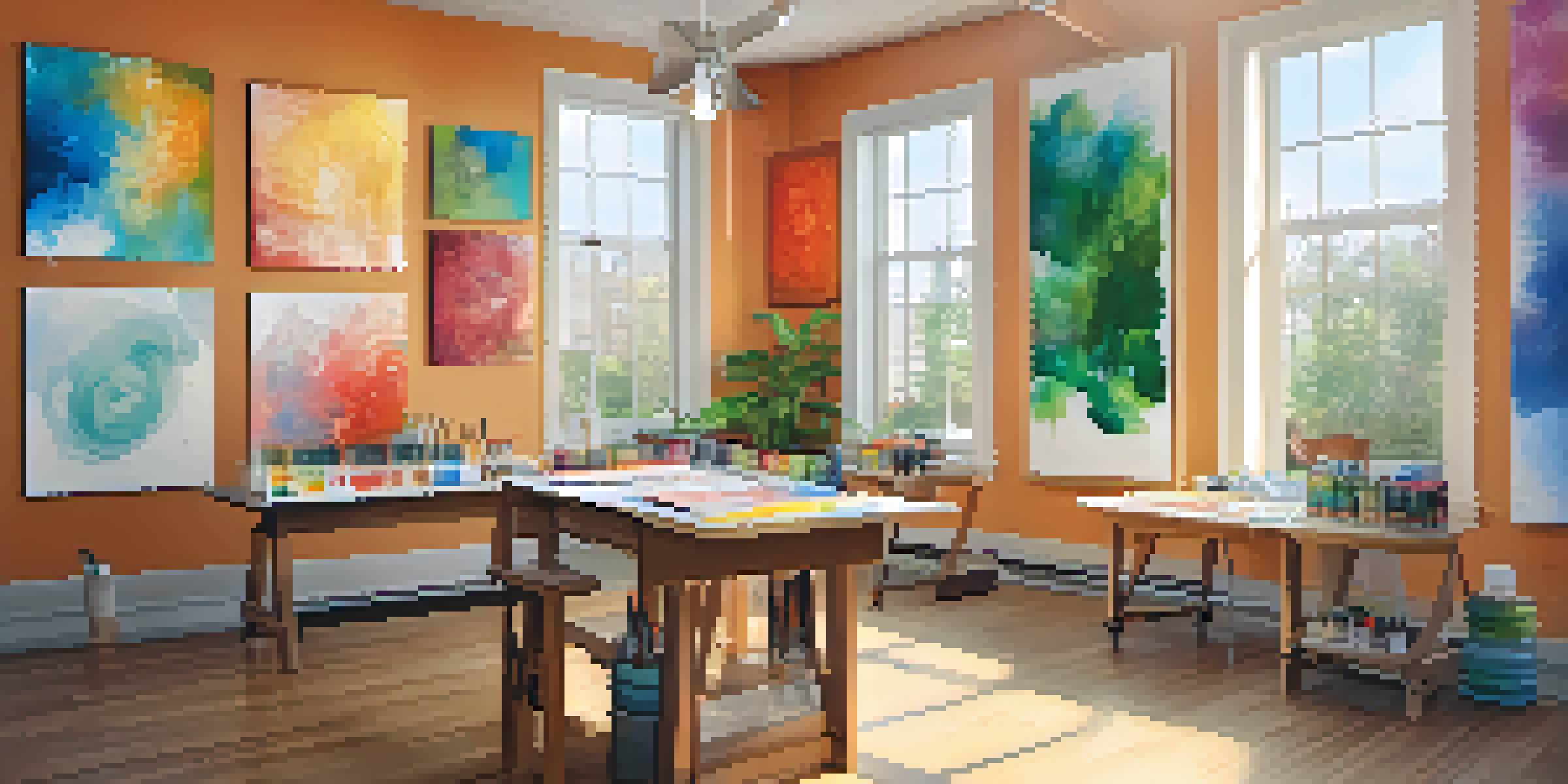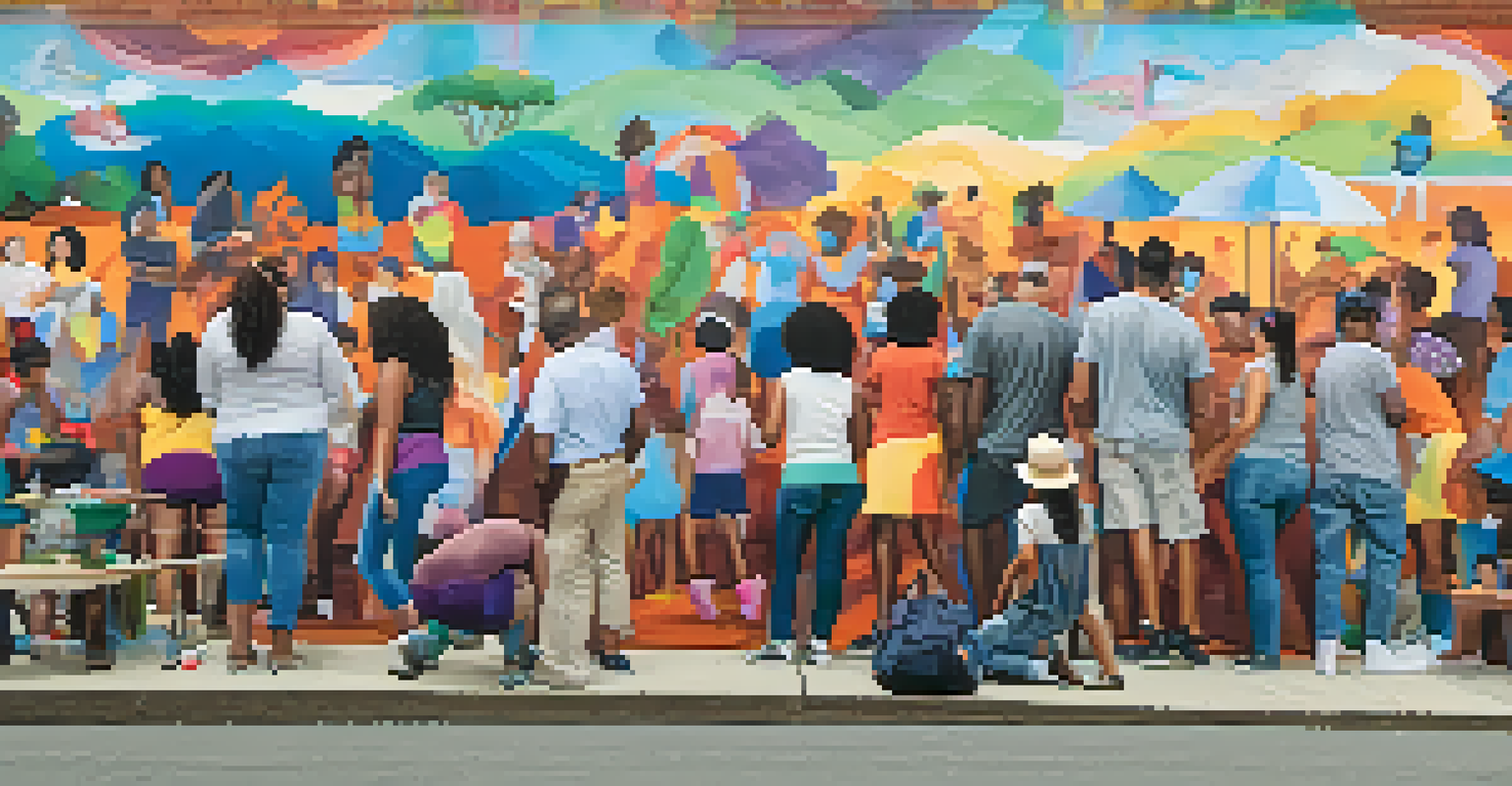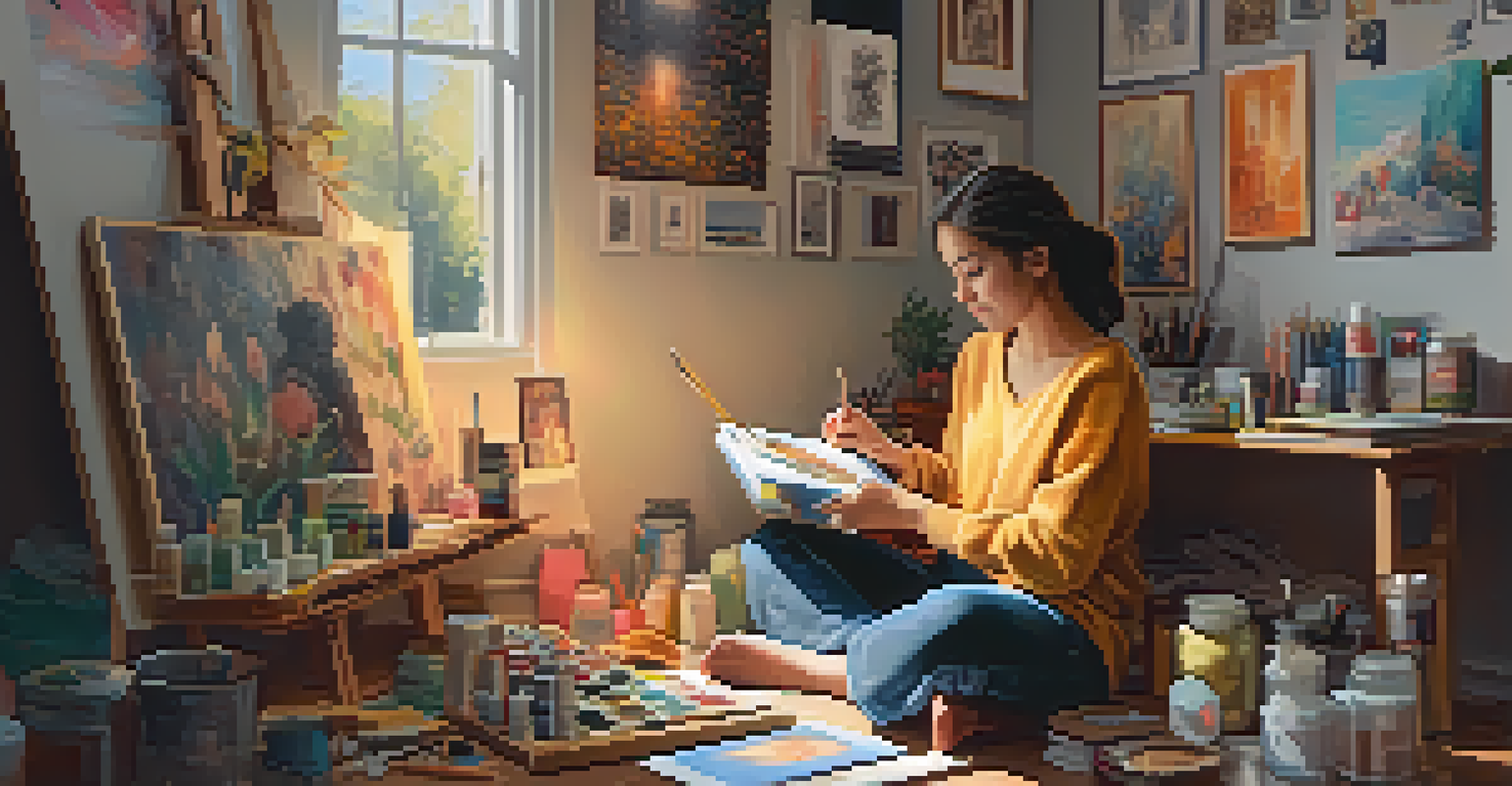Art and Mental Health: Innovative Approaches to Healing

Understanding the Connection Between Art and Mental Health
Art has long been recognized as a powerful medium for expression and communication, especially for those grappling with mental health issues. It provides an outlet for feelings that may be difficult to articulate in words. By engaging with art, individuals can reflect on their emotions and experiences, leading to deeper self-awareness.
Art is the most beautiful of all lies; it is a lie that makes us realize the truth of our own existence.
Research has shown that creative activities can trigger the release of dopamine, a neurotransmitter associated with pleasure and motivation. This biological response can enhance mood and foster a sense of well-being. For instance, painting or drawing can serve as a therapeutic practice, helping people to process trauma and reduce anxiety.
Furthermore, art can create a sense of community. Group art therapy sessions allow individuals to connect with others facing similar challenges, reducing feelings of isolation. This shared experience can be incredibly healing, reinforcing the idea that one is not alone in their mental health journey.
Art Therapy: Professional Guidance for Healing
Art therapy is a structured approach that involves working with a trained therapist to explore emotions through artistic expression. This method is particularly effective for individuals who find traditional talk therapy challenging. The therapist provides guidance, helping clients to interpret their artwork and uncover underlying feelings.

During art therapy sessions, clients might engage in various activities, such as painting, sculpting, or even digital art creation. These activities can facilitate communication and offer insights that might not emerge through verbal dialogue. For example, a person struggling with depression may create dark, chaotic images that can lead to discussions about their feelings of hopelessness.
Art Enhances Mental Well-Being
Engaging in creative activities can boost mood, reduce anxiety, and foster self-awareness.
Moreover, art therapy isn't just for those with severe mental health issues; it can benefit anyone looking to improve their emotional well-being. Many people find that creating art provides a sense of accomplishment and boosts self-esteem, making it a versatile tool for healing.
The Role of Community Art Programs in Healing
Community art programs have emerged as a powerful way to promote mental health and well-being. These programs often provide a safe space for individuals to express themselves creatively while connecting with others. Whether through workshops, exhibitions, or collaborative projects, community art initiatives foster social connections and support.
Creativity takes courage.
Engagement in community art can also reduce stigma around mental health issues. When people come together to create, they often share their stories and experiences, breaking down barriers and encouraging open conversations. This collective experience can empower individuals to seek help and take action regarding their mental health.
For instance, a mural project involving local artists and residents can transform a neighborhood while providing participants with a sense of purpose and belonging. These communal activities not only beautify spaces but also uplift spirits, showing the profound impact of art on community mental health.
Expressive Arts: Beyond Traditional Art Forms
While painting and drawing are commonly associated with art therapy, expressive arts encompass a variety of forms, including dance, music, and writing. These alternative methods also offer therapeutic benefits, allowing individuals to explore their emotions in diverse ways. For instance, someone might find that writing poetry helps them articulate feelings they struggle to express otherwise.
Music therapy, for example, can be particularly effective for those dealing with trauma. Listening to or creating music can evoke powerful emotions, providing a cathartic release. A study showed that participants in music therapy reported reduced anxiety and improved mood, highlighting the versatility of expressive arts in mental health treatment.
Art Therapy Provides Professional Help
Working with trained therapists in art therapy helps individuals express emotions and uncover deeper feelings.
Ultimately, the key is finding the right medium for each individual. Whether it's through dance, drama, or another form of expression, the goal remains the same: to facilitate healing and personal growth. This approach underscores the idea that there is no one-size-fits-all solution in mental health care.
The Science Behind Art's Impact on Mental Well-Being
Numerous studies have documented the positive effects of art on mental health. Neuroscience research indicates that engaging in creative activities stimulates brain regions associated with emotions and cognition. This stimulation not only enhances mood but can also reduce symptoms of anxiety and depression.
Moreover, art can serve as a mindfulness practice, allowing individuals to focus on the present moment. Engaging in creative tasks requires concentration, which can help distract from negative thoughts and worries. This practice of being 'in the moment' is a key component of many therapeutic methods, including cognitive-behavioral therapy.
By understanding the science behind these effects, we can better appreciate the value of integrating art into mental health care. It becomes clear that art isn't just a pastime; it's a powerful tool for enhancing emotional resilience and promoting overall well-being.
Integrating Art into Traditional Mental Health Practices
Integrating art into traditional mental health practices can create a more holistic approach to treatment. For example, mental health professionals might incorporate art exercises alongside cognitive-behavioral techniques. This combination can help clients better understand their thoughts and emotions while providing a creative outlet for expression.
Moreover, many therapists are beginning to embrace the idea of 'art as therapy' in their practices. This shift recognizes the therapeutic potential of creative expression, allowing clients to explore their feelings in a non-confrontational manner. It also encourages clients to take ownership of their healing process, as they can choose how and when to engage with art.
Community Art Fosters Connection
Community art programs promote mental health by creating safe spaces for expression and social interaction.
As mental health care continues to evolve, integrating art into treatment plans may become more mainstream. This change promises to enrich the therapeutic experience, making it more accessible and enjoyable for individuals seeking help.
Art as a Tool for Self-Care and Personal Growth
For many, engaging with art can serve as a valuable self-care practice. Whether it's doodling in a sketchbook, playing an instrument, or crafting, these activities can provide a much-needed respite from daily stressors. Regularly setting aside time for creative expression can significantly improve overall mental health and resilience.
Additionally, art encourages personal growth by allowing individuals to explore their thoughts and feelings. Creating art can lead to self-discovery, helping people better understand their identities and experiences. This journey of exploration can be both liberating and empowering.

Ultimately, incorporating art into daily routines can foster a positive mindset, encouraging individuals to prioritize their mental health. It reinforces the idea that taking time for oneself through creative practices isn't just a luxury—it's an essential part of thriving in today's fast-paced world.